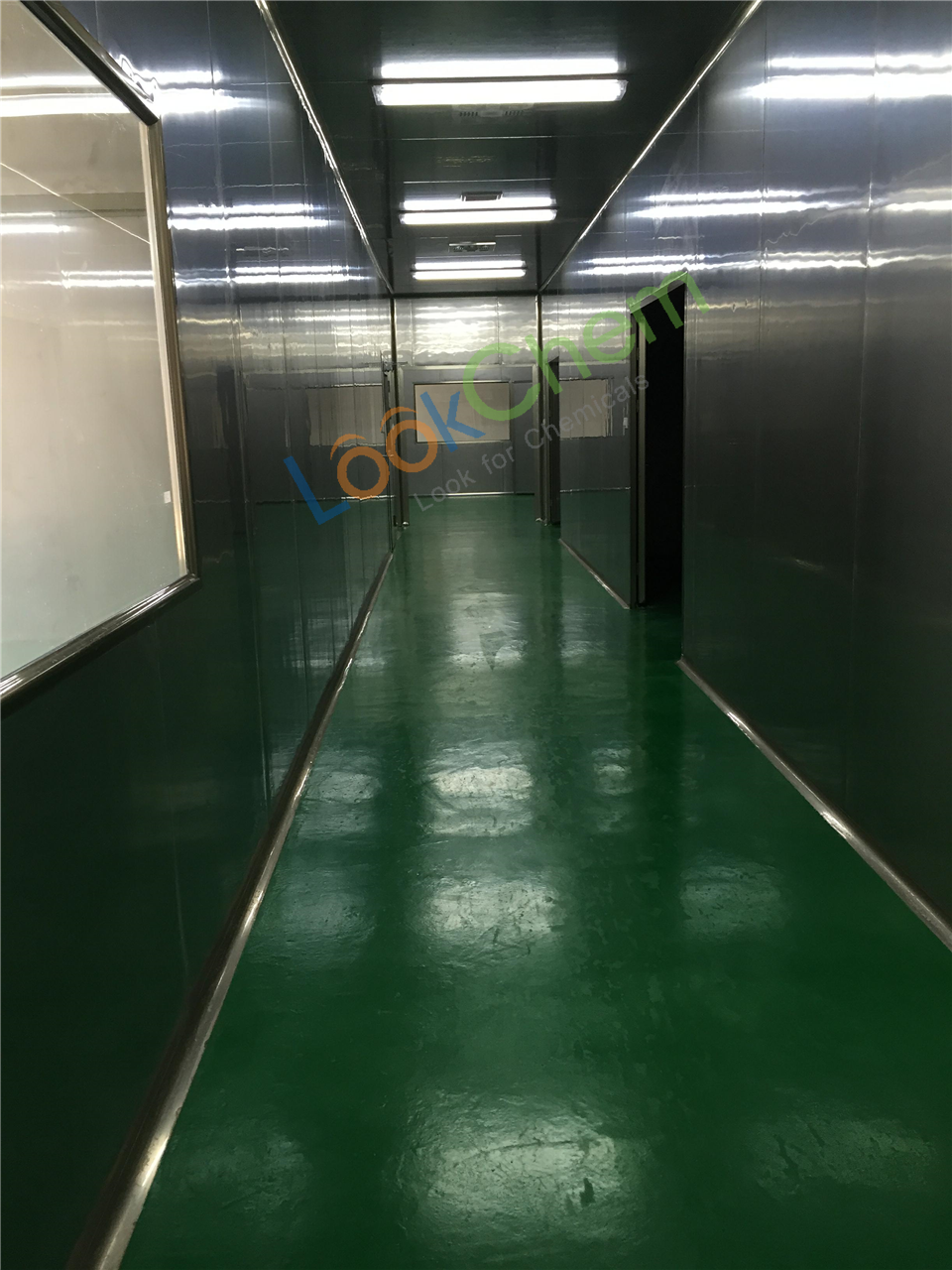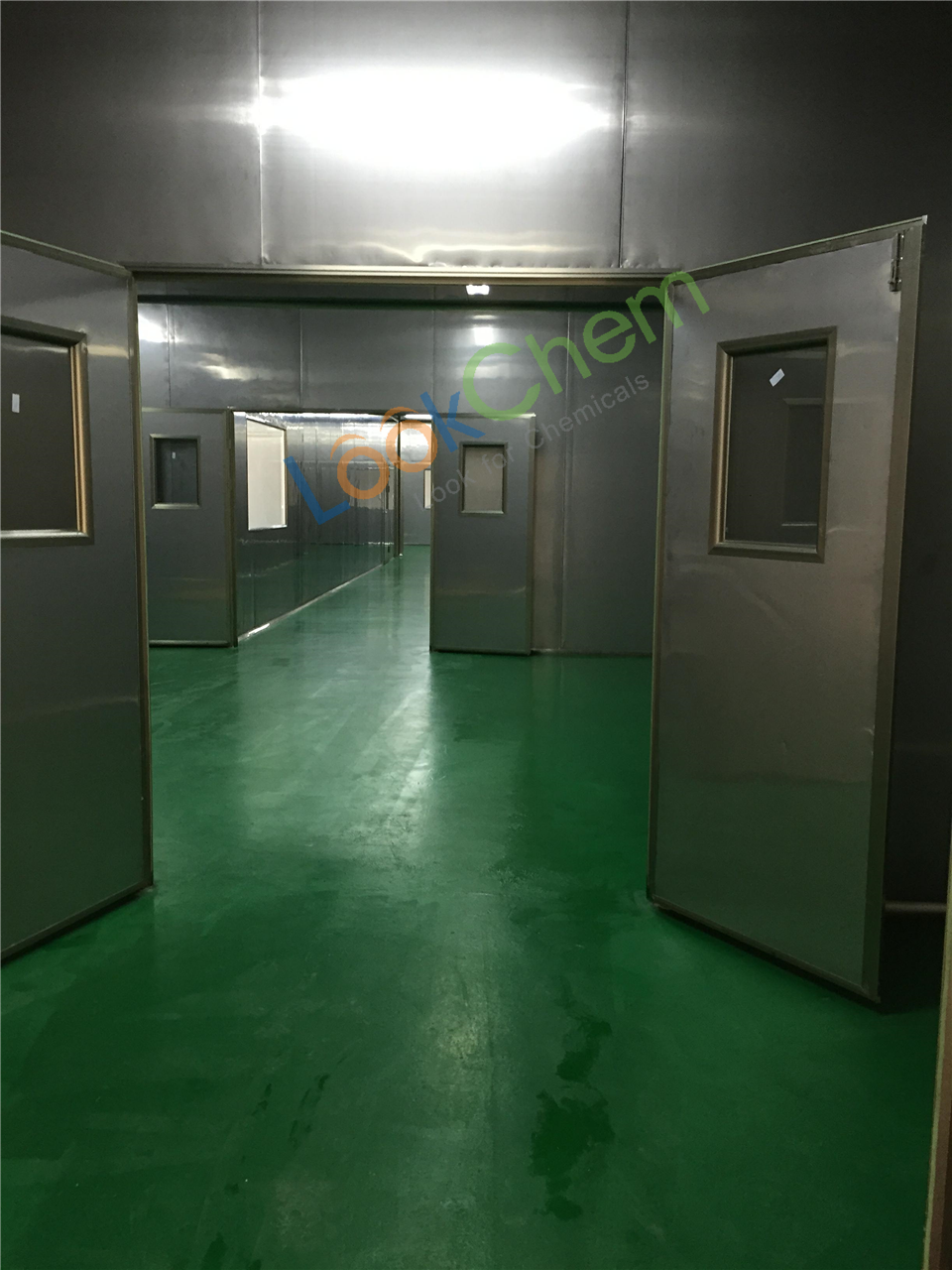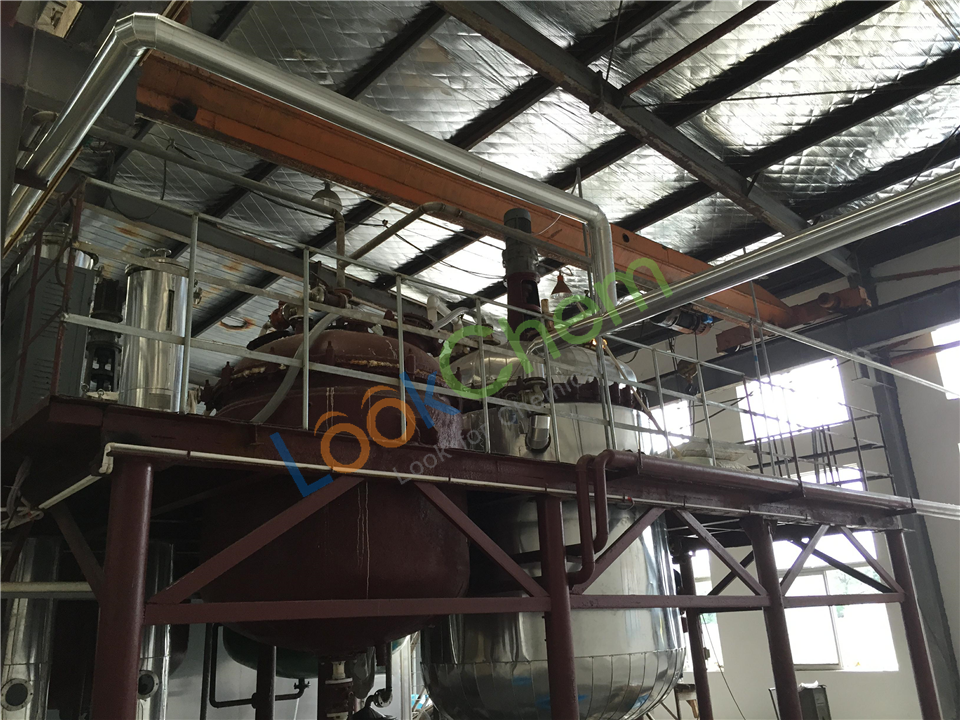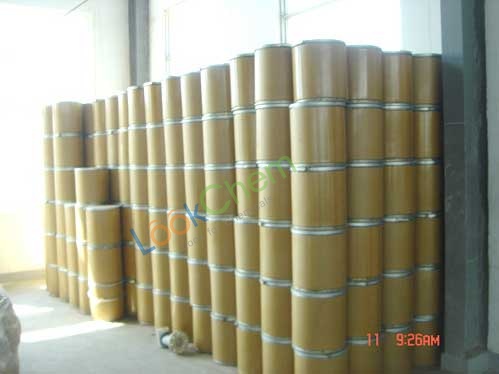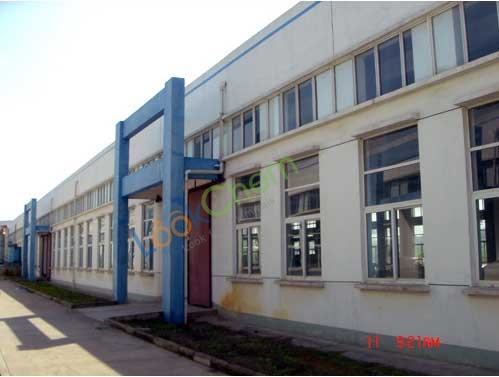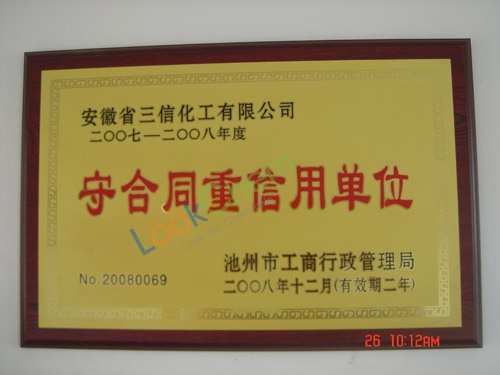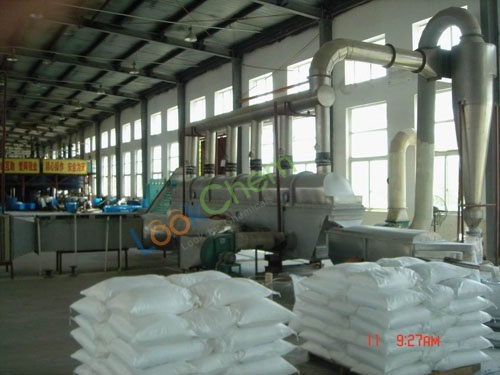pka of succinic acid
- Product Details
- Company Profile
What is the pH theory? And this relationship could be explained through the following equation, with the participation of pH, pKa, and the relative concentrations of an acid and its salt.

[A-] means the molar concentration of the salt (dissociated species)
[HA] means the concentration of the undissociated acid
When the concentrations of the salt and acid are equal, the pH of the system equals the pKa of the acid.
The following form is introducing the acid-base dissociation constants of the chemical succinic acid. And the data it provided is applying to dilute aqueous solutions, which are showed in the form of pKa, which is the negative of the logarithm of the acid dissociation constant Ka. (All the detailed infomation are provided by the Anhui Sunsing Chemicals Co.,Ltd., one leading succinic acid supplier in China.)
| Molecular formula | Name | Step | TI°C | pKa |
| C4H6O4 | Succinic acid | 1 | 25 | 4.16 |
| 2 | 25 | 5.61 |
Succinic acid Details
ProName: Succinic acid (110-15-6) CasNo: 110-15-6
Succinic acid Appearance: colorless to white crystal or white cr...
Succinic acid Application: used in pharm, dyement
Succinic acid DeliveryTime: within one week after confirm the orde...
Succinic acid PackAge: 25kg woven bag/25kg net bag /25kg drum
Port: Shanghai, Chizhou
ProductionCapacity: 300-400 Metric Ton/Month
Succinic acid Purity: ≥99.5%
Succinic acid Storage: keep under seal in cool , ventilated a...
Succinic acid Transportation: by sea or bt air
Succinic acid LimitNum: 1000 Kilogram
Introduction of Succinic acid
Succinic acid, with its cas register number 110-15-6, has its chemical formula of C4H6O4 and has its other names like Butanedioic acid, Amber acid and 1,2-Ethanedicarboxylic acid. In normal temperature and pressure, this chemical is being stable. Besides, it is soluble in water, ethanol and diethyl ether, while insoluble in chloroform and methylene chloride.
What is more, with its relative molecular weight of 118.0g/mol, Succinic acid belongs to the product categories of Succinic Series; alpha,omega-Alkanedicarboxylic Acids; Monofunctional & alpha, omega-Bifunctional Alkanes. Then it is not compatible with incompatible materials, reducing agents, bases, but you also need to keep it away from incompatible materials. When comes to its usage, it could be used externally for rheumatic aches and pains, and internally in inveterate gleets.
Detailed Information of Succinic acid
1). Properties of Succinic acid are as below:
(1)ACD/LogP: -0.933;
(2)# of Rule of 5 Violations: 0;
(3)ACD/LogD (pH 5.5): -2.49;
(4)ACD/LogD (pH 7.4): -5.47;
(5)ACD/BCF (pH 5.5): 1.00;
(6)ACD/BCF (pH 7.4): 1.00;
(7)ACD/KOC (pH 5.5): 1.00;
(8)ACD/KOC (pH 7.4): 1.00;
(9)#H bond acceptors: 4;
(10)#H bond donors: 2;
(11)#Freely Rotating Bonds: 3;
(12)Polar Surface Area: 74.6;
(13)Index of Refraction: 1.478;
(14)Molar Refractivity: 23.709 cm3;
(15)Molar Volume: 83.814 cm3;
(16)Polarizability: 9.399*10-24cm3;
(17)Surface Tension: 61.6800003051758 dyne/cm;
(18)Density: 1.409 g/cm3;
(19)Flash Point: 110.89oC;
(20)Enthalpy of Vaporization: 52.092 kJ/mol;
(21)Boiling Point: 236.149 oC at 760 mmHg;
(22)Vapour Pressure: 0.017000000923872 mmHg at 25oC.
2) Safety information of Succinic acid
For being one kind of irritant chemical, Succinic acid is irritating to eyes, respiratory system and skin, and it may cause inflammation to the skin or other mucous membranes. Therefore, you should take the following measures to protect yourself from dangers. Firstly, wear suitable protective clothing, gloves and eye/face protection. And if in case of contact with eyes, rinse immediately with plenty of water and seek medical advice.
3). The usage of Succinic acid in different fields
1)). In basic organic chemical raw materials, succinic acid could be used in painting, dyes, adhesive, medicine and so on; It could also be used in the usage of paper manufacturing and textile industry; This chemical could be applied as the raw material for lubricant, photographic chemicals and surface active agent.
2)).In medicine industry, Succinic acid could be used in the synthesis of sedative, diuretic, vitamin, contraceptive and cancer drugs.
3)). In chemical industry, Succinic acid could be used as the modifier of PH value when in electroplating, strengthening agent for plastics. And it is also applied in productions of spray paint, dyes, ion exchange resin, pesticide and so on. Secondly, this could be used as the intermediate of fine chemicals and organic synthesis. This chemical has wide application, including dyes, organic pigments, rubber vulcanization accelerator, alkyd resin, adhesive, lubricants, papermaking chemicals, plant growth promoters, photographic chemicals, surface active agent, ion/change resin, pesticide, fungicide and cosmetics.
4)). Succinic acid could be applied as one kind of standard reagent for Alkalimetry, buffer and contrast samples for gas chromatography. Besides, it could be used in the synthesis of dyes and paintings.
5)). In food industry, Succinic acid could be used with slight dose. It is one kind of food acids which is applied in the seasoning of wine, feed, and candy. And we would like to introduce one kind of food-grade Succinic acid, with the detailed information below:
| Appearance | colourless to white crystal or white crystal powder |
| Content % | >=99.5 |
| Melting range(oC) | 185.0-190.5oC |
| Chloride % | <=0.007 |
| sulfate(SO42-)% | <=0.02 |
| heavy metal(Counted in Pb2+)% | <=0.001 |
| iron content % | <=0.002 |
| potassium permanganate (Reducing substances) | Qualified |
| Sn Content (As2O3) | <=2PPM |
4). Four Different Succinic acid Production Methods
1)). The first production method of succinic acid: Paraffin could go through the reaction of oxidation to produce the carboxylic acid compound, and then have the separation to produce succinic acid.
2)). The second succinic acid production method: Maleic anhydride or fumaric acid could have the hydrogenation reaction with the catalyst to produce succinic acid, in the temperature of 130-140 oC; Secondly, go through the separation to get succinic acid
3)). The third production method: Crylic acid could react with carbonic oxide in the condition of catalytic agent to achieve the chemical succinic acid.
4)). The fourth succinic acid production method: Acetonitrile could be condensed to produce butanedinitrile with the existence of ferrous; And then the product is hydrolyzed to have succinic acid.
5). Packing and storage of Succinic acid :
1)). Package: 25kg/kraft bag; 500kg/plastic woven bags with inner or requirements according to customers
2)). Storage: Succinic acid should be stored sealed in a cool, dry place.
6). Succinic Acid Production Though Fermentation
The process of fermentation is receiving increasing attention as it can use renewable feedstocks as substrates and is seen as a more ‘green’ technology compared to chemical
production because of its renewable resource consumption and its limited impact on the environment [McKinlay et al., 2007]. The direction in which succinic acid production is heading can be summarized in a quote from McKinlay et al (2007). “Considering the current political and economical climate of crude oil-based industries, bio-based chemical production is in a position to complement and compete with existing petrochemical markets.”
Studies show that in the United States alone, 1 billion tons of biomass is available annually from the forestry and agricultural sectors without hindering food production [Perlack et al., 2005]. In a summary paper on the bio-based succinate industry in 2007, it was projected that with all the chemicals that can be synthesized with succinic acid as an intermediate, there exists a market of $15 billion US [McKinlay et al., 2007]. Estimates are that succinic acid could be produced through fermentation at $2.20 per kilogram at a production level of 5,000 tons per year, but the price would drop to $0.55 per kilogram if production levels reached 75,000 tons per year [Kang and Chang, 2005]. This upper production level may seem high, but this area of biochemical production will soon reduce the need for petrochemicals, so demand is expected to rise [Werpy and Petersen, 2004].
Succinic acid, when produced through fermentation, converts glucose to succinic acid along a portion of the reductive cycle of the tricarboxylic acid (TCA) cycle [Lee et al.,2002].Figure 2-3 depicts the reactions and enzymes in a typical fermentation process that transforms glucose to succinic acid.
First, glucose is converted to glucose-6-phosphate by hexokinase, which also adds phosphate to the molecule [McKinlay and Vieille, 2008]. Next, three separate enzymes that are
part of the Embden-Meyerhoff-Parnas glycolytic pathway lead to the production of phospho-enolpyruvate (PEP) [McKinlay and Vieille, 2008]. From PEP, the metabolic pathway can take one of two paths depending on the level of carbon dioxide available to the system [McKinlay et al.,2007]. If there is not enough CO2 present in the system, the preferred metabolic pathway creates end products of formate, ethanol and acetate, as shown on the right side of Figure 2-3. With ample supply of carbon dioxide to the system, the microorganism favours the production of succinic acid, the left half of Figure 2-3 [McKinlay et al., 2007]. Through this pathway, PEP is converted to oxaloacetate by PEP carboxykinase with the addition of CO2. This creates a 4-carbon chain, giving this series of reactions the name ‘C4 pathway’ [Lee et al., 2008]. The presence of high levels of carbon dioxide in the system strongly regulates the activity of PEPcarboxykinase [Zeikus et al., 1999]. The next reaction adds hydrogen to oxaloacetate to produce malate, which is converted to fumarate by fumarase with the removal of a water molecule [McKinlay and Vieille, 2008]. Finally, with the addition of hydrogen, succinate is formed in its ionic state, which is common as the pH range of production is above the pKA values for succinic acid [McKinlay and Vieille, 2008, Zeikus et al., 1999]. Succinic acid can be created by
protonating the succinate ion and producing the undissociated acid, which can be done in a number of different processes as discussed later. The theoretical yield of succinic acid from glucose plus carbon dioxide should be 1.17 moles per mole of glucose based on stoichiometry [McKinlay and Vieille, 2007].
This production method is not without unwanted by-products, however. In a study on the fermentation of wheat by Du et al. (2007), acetic acid and formic acid were moderate by-products produced in concentrations of 9.2g/L and 6.1g/L, respectively. These values are lower than the final concentration of succinic acid at 27.2g/L, but still make the separation process more time consuming and costly. Another major problem, shown on the metabolic pathway in Figure 2-3, is 14 that the conversion of glucose to glucose-6-phosphate takes place with the side reaction of converting PEP to pyruvate, an irreversible step [McKinlay and Vieille, 2008].
Succinic acid is also a highly reduced product, so throughout the fermentation process from glucose, four electrons are required. Therefore, in addition to carbon dioxide gas, hydrogen has been suggested as an addition to act as a reducing agent since reductant levels can limit the reaction rate [Lee et al., 1999, McKinlay and Vieille, 2008]. In studies done by Lee et al. (1999) the addition of hydrogen often decreased fermentation time, making the process more efficient.
However other studies make no mention of the addition of hydrogen gas and obtain comparable concentrations of succinic acid [Lee et al., 1999, Liu et al., 2008b]. Additionally, other reducing agents, including formate and Natural Red dye have been used with encouraging results [McKinlay and Vieille, 2008].
For bioproduction of succinic acid to be economical, major areas of biological process improvement need to be addressed, including limiting the use of low-cost amino acids, achieving high yield and concentration and using inexpensive carbon sources [Glassner and Datta, 1989].Fermentation requires both substrate and media which contain the energy sources, nutrients and minerals needed to ensure optimal productivity rates [Lee et al., 2002]. Depending on the microorganism chosen for the fermentation process, there are many carbon sources available. In the case of succinic acid production, most of the major sugars present in biomass can be used effectively, including glucose, fructose, arabinose and xylose [McKinlay and Vieille, 2007].
While the cost of these sugars is relatively low, other carbon sources have been examined, in attempts to lower the cost of fermentation. These other sugars range from glycerol and wood hydrolysate to waste whey from milk and cheese production [Bechthold et al., 2008, Wan et al,2008]. McKinlay and Vieille (2007) suggest that a succinate-based market through fermentation can be economical provided that the price of oil remains above $40 per barrel and if corn remains above $90 per ton. McKinlay et al. (2007) suggest that productivity goals of 150g/L and 5g/L·h are ideal production targets to compete with oil-based succinic acid production. 15 As succinic acid production from fermentation reaches a point where industrial facilities are being constructed, they will be located very near to supplies of biomass as well as carbon dioxide. An ideal location would be in close proximity to an ethanol plant. These production facilities could make their process more value-added by using their waste carbon dioxide and biomass, such as cane molasses and cheese whey for succinic acid production. Since fermentation of succinic acid is considered a CO2 fixing process, this would turn a by-product of the first process into an input for the second [Urbance et al., 2004, McKinlay and Vieille, 2007]. This coproduct system would also reduce greenhouse gases produced in the creation of ethanol and the
waste plant material could also be used as a substrate for succinic acid bioproduction [Zeikus etal., 1999]. As with any bioproduction, a biocatalyst is required and there are many microorganisms in existence that can perform this transformation.
Succinic acid Related products
Hot sale 99% Succinic acid food grade suppliers in China
Buy competitive price Succinic acid/butanedioic acid in China
Factory supply Superior Quality Succinic acid producers
High purity Qualified Succinic acid manufacturer/wholesale
Top quality Succinic Acid powder cost
Pure Succinic acid powder Purchase Succinic acid traders
Succinic acid mono-3-amino-2,4,6-triiodo-N-ethylanilide
Succinic acid, (4-ethoxy-1-napthyl-carbonylmethyl) ester
Succinic acid
Succinic acid
Succinic acid
Succinic Acid -- food/medical/industrial grade CAS#110-15-6 CAS NO.110-15-6
supply good quality and best price of Succinic Acid CAS NO.110-15-6
Succinic acid,bis(2-(hexyloxy)ethyl) ester
Succinic acid (110-15-6)
Succinic acid,CAS 110-15-6
Succinic acid
Succinic acid
Succinic acid
Succinic acid
Succinic Acid -- food/medical/industrial grade CAS#110-15-6
Hot sale Succinic Acid with high purity 99.5% min CAS NO.110-15-6
Succinicacid
Succinic acid 110-15-6
Succinic acid
Succinic acid
Succinic acid
Succinic acid
Succinic acid
Succinic Acid
Succinic Acid
Succinic acid/110-15-6
Succinic acid
Loxapine succinate salt
Intermediate of paint & dye ---Succinic acid CAS: 110-15-6
Succinic acid Related images
.jpg)
.jpg)
.jpg)
.jpg)
.jpg)
.jpg)
Succinic acid Related news
Succinic acid markets and applications
BioAmber opens succinic acid facility in Sarnia, Canada
Succinic Acid Current Production
Biologically Derived Succinic Acid (BDSA) Production
Succinic Acid Global Market Outlook
Succinic Acid Market Size To Reach $237.8 Million By 2022
BRIEF-BioAmber signs supply agreement for bio-succinic acid in lubricants
Biotechnology of succinic acid production and markets for derived industrial products
Economical succinic acid production from cane molasses
Succinic acid is a four-carbon dicarboxylic acid
Succinic acid production with reduced by-product formation
Succinic Acid: A New Platform Chemical for Biobased Polymers
Verified Supplier
Anhui Sunsing Chemicals Co.,Ltd
- Country:
 China (Mainland)
China (Mainland) - Business License:

- Business type: Manufacturers
- Integral:


Contact Details|Similar Products

Escrow ServiceMore
Secure Your Orders With escrow More Transparency,Less Uncertainty


 Add to inquiry cart
Add to inquiry cart
